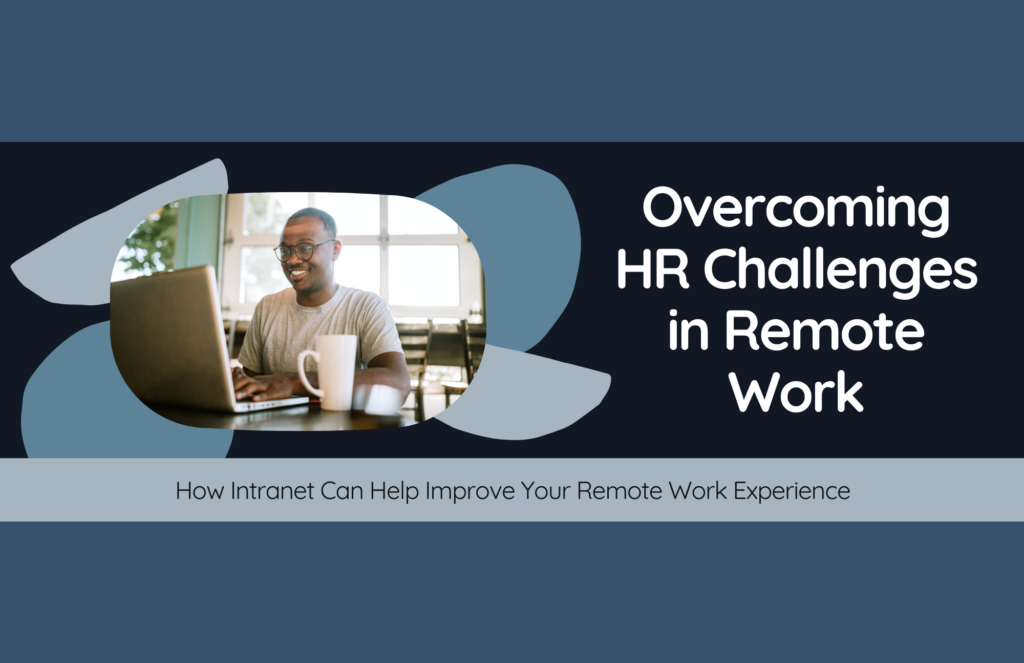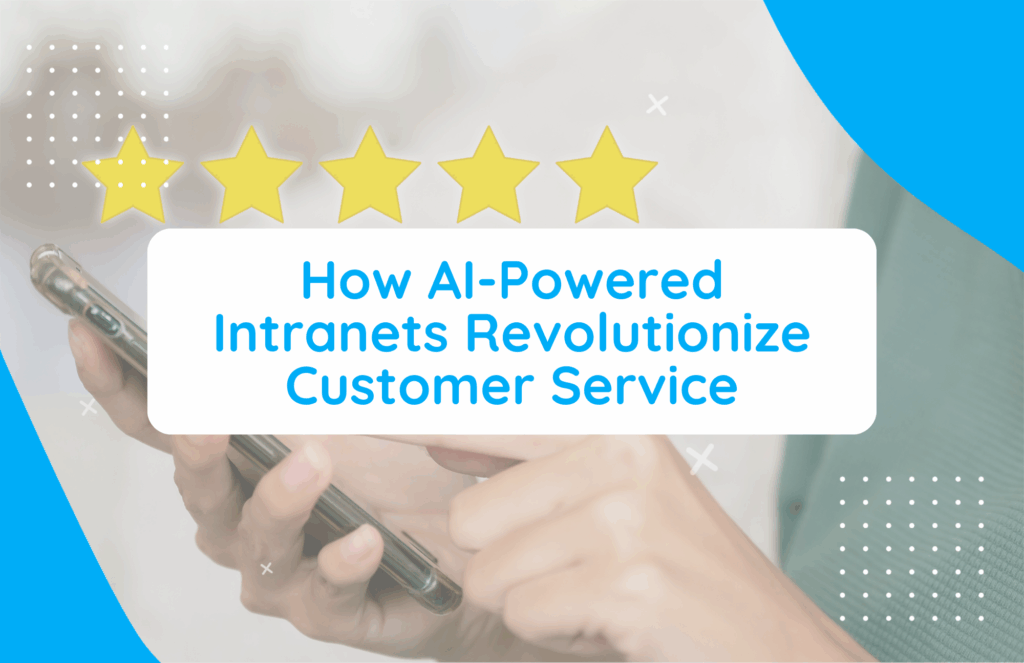The shift from traditional office setups to remote work can help your company become more resilient and diverse. However, it is not without unique challenges, particularly for human resources (HR) departments. Adopting an intranet tailored for HR can be instrumental in overcoming the challenges of working remotely Explore the landscape of remote work challenges and discover how the role a human resources intranet plays in driving enhanced productivity and engagement.
The Landscape of Remote Work
Remote work has reshaped how many businesses run. While the modern work environment is still changing, one thing is clear: remote work is here to stay. Most employees are resistant to going back to the office — and understandably so. While remote work offers flexibility and cost savings, it also introduces complexities for HR functions such as evaluations, onboarding, and benefits management. Addressing these challenges becomes imperative for organizational success.
Remote Work Best Practices
Remote work offers many advantages such as increased satisfaction and productivity but also presents challenges, particularly in communication. Without the cues of body language, digital interactions can lead to misinterpretations and anxiety. To mitigate this, remote teams must develop new collaboration skills. Establishing communication norms and using proper digital channels help maintain clarity.
Strengthening Remote Team Dynamics
Celebrating achievements and fostering social connections virtually not only strengthens team relationships but also contributes to effective remote collaboration. HR can use a tool like an intranet to create an intentional space for celebration. Virtual spaces for peer praise, celebrations, and social interactions strengthen bonds and build the foundation for future collaboration.
Remote Work Challenges for Human Resources Managers
Transitioning to remote work has accentuated several HR challenges:
Communication Challenges
Remote work diminishes spontaneous interactions, leading to communication gaps. These communication challenges have led to reduced clarity on goals and expectations. HR personnel are also finding it harder to communicate company standards and guidelines. Digital communication is very nuanced and things like frequency and medium affect how a message is perceived. Using the correct platform to convey your message plays a pivotal role in avoiding misunderstandings and promoting synergy within remote teams.
Performance Monitoring and Professional Development
In remote work settings, the absence of physical presence challenges traditional performance evaluation methods. However, remote work offers clarity in assessing performance solely based on output, allowing managers to focus on the work produced rather than irrelevant factors like work hours. Embracing flexible working hours based on individual productivity peaks fosters optimal performance and efficiency within remote teams, enhancing accountability and identifying productive contributors. Nevertheless, businesses must transition from traditional performance monitoring methods to adopt remote monitoring tools tracking key metrics. Additionally, aiding in professional development requires innovative systems due to limited in-person training opportunities.
Employee Onboarding
Onboarding remote employees poses challenges in making new employees feel welcome and fostering company culture. Human resources personnel are tasked with providing a cohesive and supportive onboarding experience to off-site workers while also securely sharing company documents. A human resources intranet offers the perfect solution to this ongoing challenge. It acts as a secure communication and information-sharing portal.
Company Culture and Engagement
Maintaining company culture and fostering employee engagement can be challenging when employees are physically disconnected from the workplace. An HR intranet offers a tool for optimizing engagement and providing support. When team members feel respected and cared for, they are more likely to embrace the company culture and collaborate with their counterparts. HR can also use the intranet to recognize top performers and improve transparency.
Role of Intranet in Overcoming Challenges
A human resources intranet offers a wide range of solutions to these challenges:
Improve Communication
An HR intranet serves as a centralized platform for seamless information exchange, streamlined document sharing, and efficient employee communication. By offering a designated space for all essential resources and updates, it ends the fragmentation often associated with remote work setups, thereby fostering collaboration among team members. This centralized approach not only enhances accessibility to vital information but also promotes constructive collaboration within remote teams, ultimately leading to increased productivity. Additionally, the interactive features of an intranet, such as discussion forums and chat functionalities, facilitate real-time dialogue and idea sharing, further augmenting the collaborative spirit within the workforce.
Leveraging Remote Monitoring Tools and Digital Learning Platforms
Businesses must transition from traditional performance monitoring methods to adopt remote monitoring tools tracking key metrics. These tools provide insights into employee productivity, engagement, and progress toward goals, facilitating data-driven decision-making and targeted interventions where necessary. Moreover, helping professional development in a remote work environment requires innovative approaches due to limited in-person training opportunities. HR departments can use digital learning platforms integrated into the human resources intranet to deliver interactive training modules, virtual workshops, and self-paced courses. These resources enable employees to acquire new skills, enhance their competencies, and stay abreast of industry trends from the comfort of their remote workspaces.
Streamline Onboarding
An intranet’s capabilities allow HR professionals to disseminate essential information, conduct virtual orientation sessions, and facilitate introductions to key team members thereby creating a welcoming and immersive onboarding experience. Additionally, new hires can access company resources, policies, benefits, and training materials conveniently through the intranet, empowering them to acclimate to their roles and responsibilities effectively.
Strengthen Company Culture and Engagement
By providing a centralized platform for communication, collaboration, and recognition, the intranet facilitates transparent and inclusive communication channels where employees feel valued and empowered to contribute. HR departments can leverage the intranet to recognize top performers, celebrate achievements, and cultivate a sense of community among remote teams. Think of a human resources intranet as a digital extension of your office — promoting engagement and camaraderie. The intranet fosters a cohesive and supportive work environment regardless of physical location. By prioritizing employee well-being and engagement through the intranet, HR professionals can strengthen company culture, boost morale, and drive organizational success in the remote work landscape.
Implementing Intranet Solutions
Choose an intranet platform that aligns with your HR department’s needs and integrates with existing tools like SharePoint. Focus on scalability and user-friendliness for successful implementation. Solutions like hubley also provide a plethora of training resources and support so you can get the most out of your new investment.
Best Practices for HR in Remote Work Settings
Combine your human resources intranet with:
- Proactive communication
- Continuous adaptation
- Employee support
to maximize the benefits of remote work. Managing a remote workforce can be difficult, but you can overcome these hurdles by combining hubley with best practices. Help your remote workforce thrive with hubley.
Demo the hubley Intranet Human Resources Platform
Explore the comprehensive suite of tools offered by hubley’s HR intranet portal. Book a demo today to experience how hubley can empower your HR department in the era of remote work.









